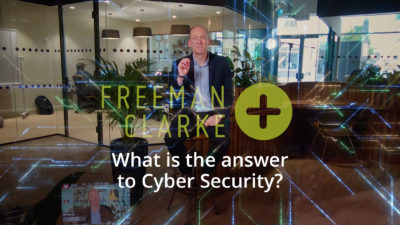Solving Cybersecurity and Compliance Risks: How a Mid-market CEO can Sleep Soundly
Every day, companies face the harsh reality of cyber threats. Hacks not only tarnish reputations but also lead to financial...
Read moreEvery day, companies face the harsh reality of cyber threats. Hacks not only tarnish reputations but also lead to financial...
Read moreAlmost as soon as computers were invented, some people leapt at the chance to use the technology for nefarious purposes....
Read moreEven the most well-funded organisations with the smartest technology have been victimized by cyber attacks. This is means that no...
Read moreWhen the global movers and shakers gathered at the World Economic Forum earlier this year, they got a unpleasant surprise...
Read moreGraeme Freeman, Co-founder and President of Freeman Clarke recently spoke with one of our Directors in NYC, James Sharp, about...
Read moreThe lockdown created an urgent need for many businesses to switch to home offices. It wasn’t easy, but it was...
Read moreThese days perhaps half of all companies face a cyber attack. The usual response is to insist that it's the IT...
Read moreWhat to do if and when your company suffers a cyberattack. You can listen to the other audios in this...
Read moreSo many CEOs, however capable, are unsure about how to start a Cyber Security plan. Gerry explains where and how...
Read morePlain English board-level briefings focused on technology strategies to deliver competitive advantage and business success.
You can unsubscribe at any time.
Call us on 0203 020 1864 with any questions.
Graeme Freeman
Co-Founder and Director
Plain English board-level briefings focused on technology strategies to deliver competitive advantage and business success.
You can unsubscribe at any time.
Call us on 0203 020 1864 with any questions.








